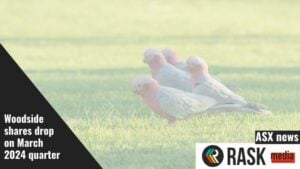Aussie homeowners with mortgages have between nine and 18 months to take advantage of record-low interest rates, according to many leading economists.
Who Cares About Interest Rates?
With property prices rising over the past 10 years and interest rates having dropped to a record-low of 1.5%, homeowners, investors and mortgagees have had it pretty good. At least, compared to historical averages.
Low interest rates have also been a boon for the banks, such as National Australia Bank Ltd. (ASX: NAB) and Commonwealth Bank of Australia (ASX: CBA), which have kept allowances for bad loans at a minimum while growing their lending portfolios.
The difference between a 25-year $500,000 mortgage charging 4% and another charging 5% is around $300 per month. However, both of those rates are substantially lower than the rates property owners had to contend with back in 2008 when official interest rates were more than 7%.
Remember, the interest rate which bank’s charge include the Reserve Bank Australia’s ‘official interest rate’. If the official interest rate increases, the bank will pass it along to mortgagees by increasing the rate they charge.
In 2008, it was common for homeowners to be slugged with more than 9% interest. On a 25-year $500,000 mortgage that means repayments of more than $4,000 per month.
Fortunately, we’re a long way from 9% interest on mortgages. Still, every dollar counts when budgets get tight and the equity in a property dries up as house prices decline or enter a slow patch.
Most economists are tipping a return to historically ‘normal’ interest rates in the next few years.
HSBC Australia economists, Paul Bloxham and Daniel Smith, expect the RBA to start lifting interest rates by mid-2018. “Our central case is for the RBA to begin to lift its cash rate from mid-2018,” the duo wrote in the latest Asian Economics report.
However, higher interest rates are not guaranteed anytime soon, and the RBA will be conscious of the sluggish growth in wages and unintended jumps in unemployment. The RBA does not want to be responsible for a fall in house prices. But that may be happening already.
“Prices in Sydney and Melbourne are expected to fall by around 5 per cent or so this year,” AMP Chief Economist Shane Oliver, said. “A property crash is unlikely in the absence of much higher interest rates and/or unemployment – both of which are unlikely.”
Despite that, lower house prices could spell trouble for many Aussie households since, according to ABS data, the average household debt has doubled since 2003/2004.
“Around one-in-four households with debt – 27 per cent – had debt equal to three or more years’ worth of their disposable household income in 2015-16,” ABS Chief Economist Bruce Hockman wrote in September. “…around three-in-ten of households with a debt (29 per cent) in Australia are considered to be ‘over-indebted’.”
“Just under half of all households with a mortgage were over-indebted in 2015-16” – Hockman
Although house prices in Sydney and Melbourne have risen rapidly over the past five years and had the highest number of over-indebted households, the highest percentage of over-indebted households can be found in Darwin (69%) and Perth (55%).
Make Hay While The Sun Shines (and house prices slow)
The average Australian household saved about 3.2% of its income in October, according to ABS data — the lowest level in 10 years. While the long-term average is around 10%, a balance between spending and saving is necessary to stimulate the economy. Ideally, economists would like savings rates to increase, but not so much that spending falls and the economy suffers.
What it all means
Since 1990, Australia’s average official interest rate is around 4.5%, that’s 3% higher than today’s levels of 1.5%. While that doesn’t necessarily mean interest rates on mortgages will increase overnight (or at all), mortgagees should be aware of the consequences of a potential increase in rates and prepare accordingly. Building a cash buffer for emergencies and avoiding too much debt seems prudent now more than ever.
Did you know it’s free to join The Rask Group’s Investor Club Newsletter? It’s a regular (usually weekly) news and educational update on financial markets, investing and unique strategies. Join today and get ready to laugh and learn.
Click here to join The Rask Group’s Investor Club Newsletter Today
Hey, you, read this disclaimer: This article contains information only. It is not financial advice. It is no substitute for trusted and licensed financial advice and should not be relied upon. By using our website you agree to our Code of Ethics, Disclaimer & Terms of Use and Privacy Policy. Also, don’t forget, past performance is not a reliable indicator of future performance.




